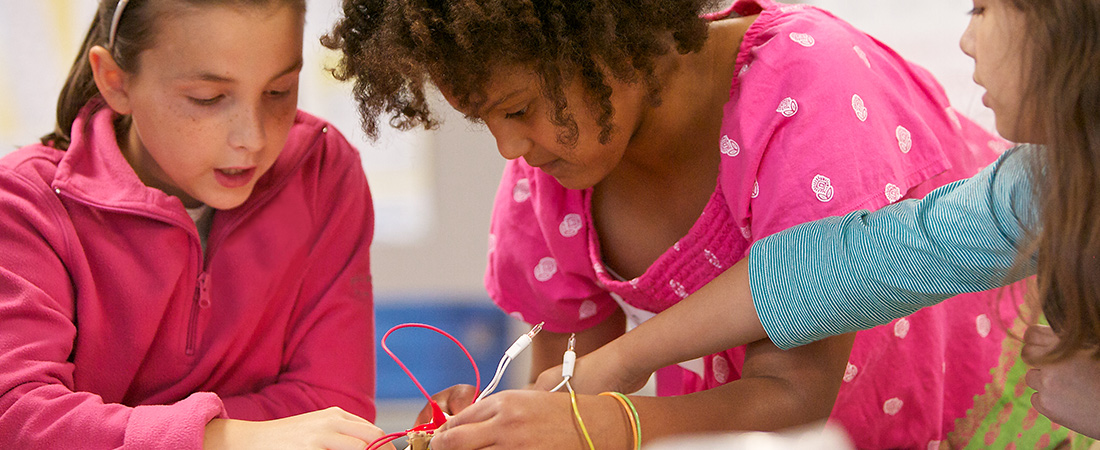Reigniting Elementary Science Education

"It’s time to bring attention to the need for time for science and for high-quality experiences," says EDC's Abigail Jurist Levy.
At a time when a strong STEM background is becoming more and more essential for preparing young people for future careers, the state of elementary science education in the United States is cause for concern.
The average amount of science instruction in U.S. elementary schools has been steadily declining since the mid-1990s. Today, K–6 students spend, at best, an estimated one to three hours per week studying the subject—one third the number of hours spent on reading, and half the number of hours spent on mathematics. And in many underperforming schools, time for science has been set aside completely.
Over the past year, EDC’s Abigail Jurist Levy has begun to wonder what it would take to reinvigorate science education in the United States—to bring back meaningful scientific exploration, reasoning, and investigation to the elementary classroom. Conversations with colleagues and science teachers helped her realize that more than any individual curriculum or lesson plan, science education needed a movement.
With the launch of EDC’s new Coalition for Elementary Science, Levy is working to create one.
“It’s time to bring attention to the need for time for science and for high-quality experiences that build bridges between science practices and across disciplines,” says Levy. “For too long students have been given too little time for science. We can’t afford that any longer.”
The Coalition’s stated goal is to make it possible for every student to have high-quality science learning experiences every week of every year of their elementary school lives. To do this, Levy envisions the Coalition as a diverse group of policymakers, educators, parents, and business leaders who are all committed to supporting elementary science education in their communities and who have the leverage to create policies and programs that put elementary science back in the spotlight.
One educator who is interested in the effort is Erin Hashimoto-Martell, director of STEM for the Massachusetts Department of Elementary and Secondary Education. Hashimoto-Martell, who is also a former science teacher, describes science education as “varied” in Massachusetts, especially in elementary school, where educators often prioritize English language arts and mathematics instruction.
“Many elementary teachers do not consider science as part of the regular core curriculum,” she says. “So as a department, we are trying to provide guidance on how educators can authentically integrate science into their instruction in other ways.”
But Hashimoto-Martell also believes that science education needs more advocates—and that failing to emphasize science education now could have a long-term impact.
“If we don’t allow students the opportunities to engage with science during their elementary school years, we are decreasing the pipeline of those who will likely pursue it later,” she says. “How can students even know if they want to do science if they don’t have the chance to experience it?”
Though the statistics paint a picture of declining time for science instruction, Levy believes that the nation is at a turning point. Many states are implementing new science standards—which will be accompanied by new science assessments. A number of high-profile reports, initiatives, and strategies have also cited the need for more and better STEM learning in grades K–12. And STEM’s popularity continues to grow outside the formal class day: maker fairs are popping up in many communities, and afterschool computer programming, robotics, and engineering clubs are now available in some elementary schools.
Levy believes the Coalition can seize on this current momentum. It isn’t about turning every third grader into a future bioengineer, she says. Rather, it’s about ensuring that every student has authentic, engaging science experiences, and that they learn the critical-thinking skills that are relevant both in and beyond the STEM fields.
“I want students to find excitement and value in science,” she says. “It’s a discipline worth advocating for.”